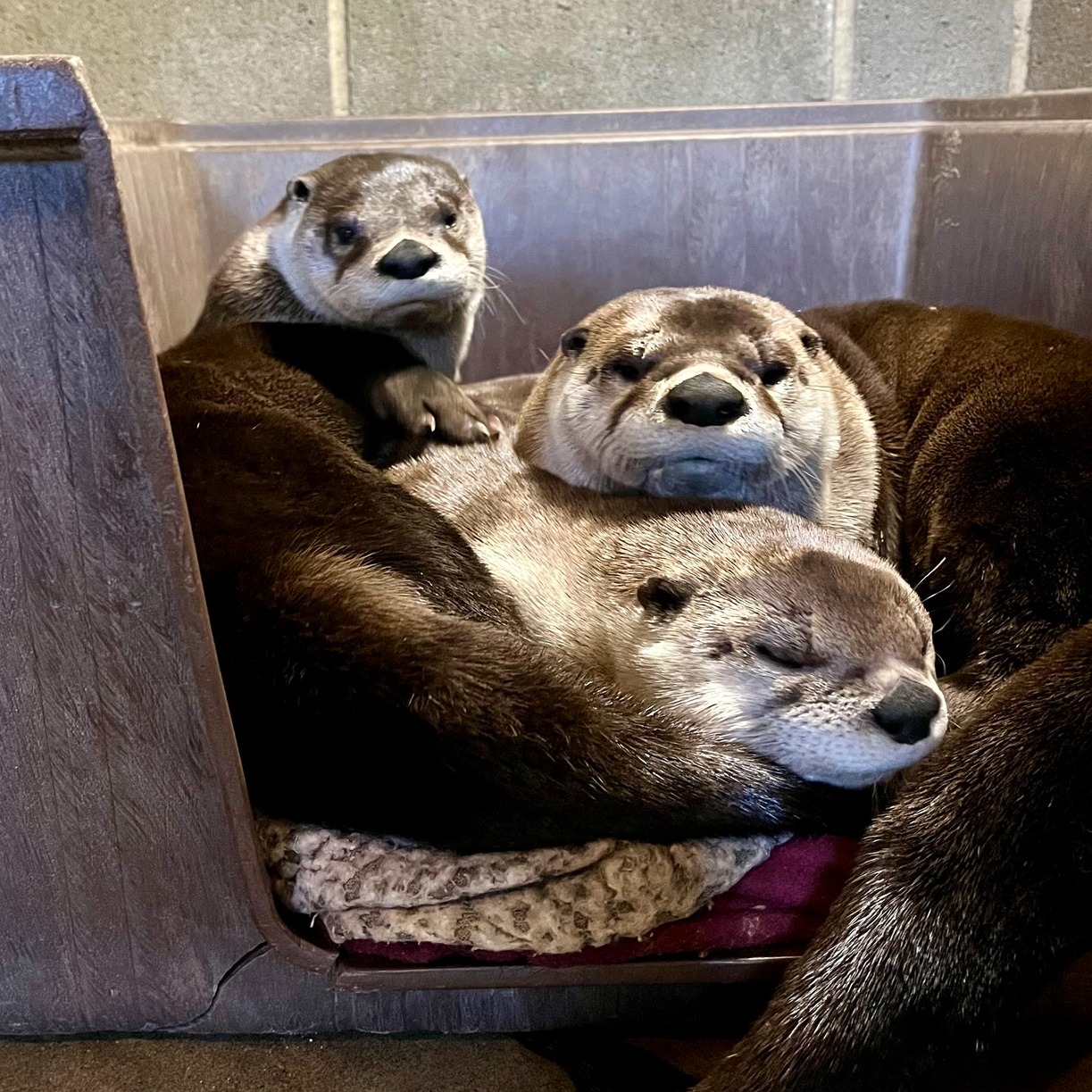– The social bonding behaviors observed in a North American river otter family
– The role of animal caregivers in facilitating natural behaviors in captive environments
– The impact of zoo exhibit design on animal well-being and conservation education
– The significance of captive breeding programs and wildlife conservation efforts for river otters
– Public engagement and its influence on conservation perspectives through the lens of playful otters
In North America’s gently flowing rivers and streams, an elusive and playful creature slides through the water with unparalleled grace. The North American river otter, a member of the Mustelid family, exhibits social and familial bonds that are endearing and paramount to the species’ overall well-being.
Photographs, such as the heartwarming image captured by Caregiver Abbey, showcasing Ben, Mia, and Sam—the otter trio—cozily nested in a cuddle puddle, provide a window into the lives of these semi-aquatic mammals. This visual, reminiscent of warmth and companionship, does more than elicit an emotional response; it offers insights into otters’ social structures and behaviors crucial for their development and survival.
In the wild, otters are known for their gregarious nature. They engage in various group activities, including foraging, grooming, and sleeping together in ‘rafts.’ A raft is an assembly of otters that interlock limbs, floating in synchrony, reinforcing their social network while resting. The cuddle puddle depicted in the photograph reflects this behavior, a testament to the animals’ instinctual need for contact and reassurance, even within their secure and managed environments.
Animal caregivers play a critical role in replicating these natural behaviors and social structures. They curate environments that encourage naturalistic activities, promoting the overall mental and physical health of the animals in their care. These caregivers become part of the otters’ daily routine and act as conservation ambassadors who educate the public about the remarkable natural behaviors and needs of these animals. By fostering such environments, they pave the way for a better understanding of river otters and the importance of protecting their habitats.
Designing otter exhibits requires a balance of scientific understanding and creativity. The enclosure must provide varied opportunities for swimming, exploration, and communal resting spaces. When these aspects are thoughtfully integrated, otters exhibit a wide range of behaviors indicative of wellness—an essential factor for any species under human care. The spirited romps and tender snuggles displayed by otters in well-designed exhibits are evidence of their adaptability and contentment. These spaces also serve as platforms for public engagement, offering visitors vivid examples of otter antics and fostering an emotional connection that often translates into a heightened interest in wildlife conservation.
Captive breeding programs for river otters are critical components of conservation efforts, primarily when the species faces threats such as habitat destruction, water pollution, and depletion of food resources. The genetic diversity maintained within these programs ensures the species’ resilience, providing opportunities for future reintroduction into the wild. These endeavors require meticulous planning, expert care, and international cooperation to manage genetic lines and replicate natural reproductive behaviors.
The delight garnered from watching an otter family in a cuddle puddle serves a dual purpose—it not only facilitates a moment of joy but also stirs a conversation about the importance of conservation. Public engagement has the potential to shift perceptions and inspire conservation action, as the otters’ whimsical demeanor becomes emblematic of the broader mission to safeguard our planet’s biodiversity.
Animal care, exhibit design, and public interaction can have broader environmental implications in wildlife conservation and zoological management. The eye-catching image of a family of river otters entangled in slumber is more than a snapshot of a serene moment; it embodies the tireless efforts of conservationists, the scientific rigor of wildlife management, and the potential for humanity to coalesce around the shared vision of a thriving, biodiverse world.
As society grapples with conservation challenges, the otter family c… and their shared moments of repose remind us of the deeper connections we share with all creatures of the natural world. Their presence, both in the wild and under thoughtful human care, speaks volumes about our collective responsibility to ensure the future of species like the North American river otter—the playful ambassadors of river ecosystems across the continent.
*****
Source Description
We wouldn’t want to get out of bed either if we were part of this otter family cuddle puddle🥹🦦
📸Ben, Mia, and Sam, the North American river otters, lay together in a bed in their bedroom. Thank you Caregiver Abbey for this photo!


